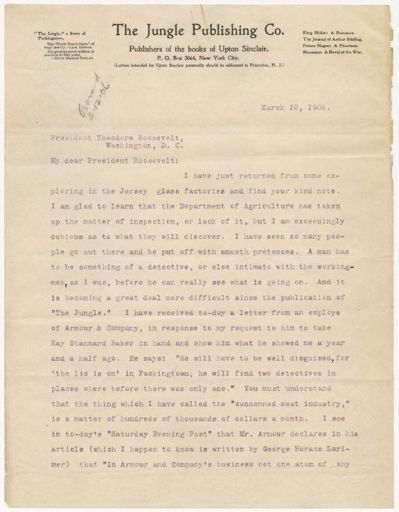At the National Archives, we have many primary sources and online teaching activities that fit into the curriculum for the Progressive Era, the 1920s, immigration, and a changing America at the end of the 19th and beginning of the 20th century.

On DocsTeach, the online tool for teaching with documents from the National Archives, we have primary sources related to child labor, including Lewis Hine photographs, petitions calling for reform, and historical documents surrounding legislation and the Keating-Owen Child Labor Bill.
You can teach with the online activity Analyzing a Child Labor Photograph. In this activity for grades 6-12, students go through the process of document analysis to better understand a photograph taken by Lewis Hine, when he was an investigative photographer for the National Child Labor Committee. After analyzing the photograph, they will try to explain how the scene shown in the photograph impacted Hine, and what impression or message he was trying to convey to those who would see his photo.
We also have primary sources related to the Temperance Movement and Prohibition. In the online activity Prohibition and Its Consequences for grades 9–12, students study documents and images related to the Eighteenth Amendment, including: the amendment itself and its repeal in 1933, letters from citizens for and against Prohibition, photographs, and political cartoons. Using these artifacts, students decide whether Prohibition was necessary to protect the individual and family, or was unwarranted over-reach by the U.S. government.

Find a variety teaching activities for Progressive Era topics, women’s suffrage, the Titanic, immigration, and Babe Ruth and baseball on DocsTeach under the Emergence of Modern America era.

In the online activity Effects of Food Regulation in the Progressive Era, aimed at grades 6-8, students analyze primary sources and learn about the differences in food manufacturing practices before and after the new food laws passed in 1906: the Pure Food and Drug Act and the Meat Inspection Act.
You can also access primary sources related to the First Red Scare, nativism, Chinese Exclusion, and immigration on DocsTeach.
While studying immigration and late 19th-early 20th century nativism in the United States, you can teach with The Impact of the Immigration Act of 1924, for grades 7-12. Students analyze a map showing quotas established by the Immigration Act of 1924, also known as the Johnson-Reed Act. They will be prompted to think about which countries were favored and which were barred from entering the United States. Then they will reflect on attitudes toward immigration at the time, and the effect these immigration restrictions had on the demographics and cultural, ethnic, and religious makeup of the United States.
You can find all of these resources on DocsTeach, where you can also create a free account to make your own online activities, customized for your students.

What was the importance of the food laws at that time?